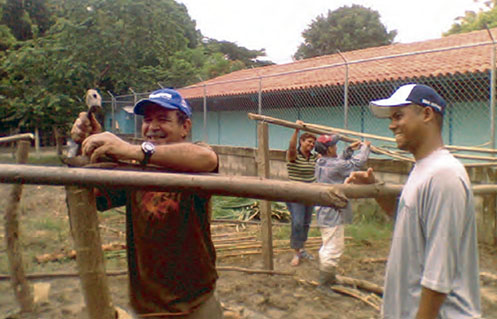Vivero artesanal como alternativa fitosanitaria del cultivo de plátano en el estado Barinas
Abstract
The cultivation of bananas in Venezuela is relevant from a social, economic and environmental point of view, by virtue of its nutritional contribution, mainly carbohydrates and minerals, as part of the daily diet of our population. From the economic aspect, it generates both direct and indirect jobs through its consumption, either fresh or processed in its different presentations such as tostones, sandwiches, among others. In the same way, it constitutes an item that is friendly to the environment, since it returns important nutrients to the soils through the decomposition of the foliage at harvest time.
In relation to agronomic management, Martínez et al. (2006); Delgado et al. (2008); Aular and Casares (2011) coincide in pointing out that plantain production crops in Venezuela have traditionally been characterized by the use of low planting densities and the lack of adequate horticultural practices, likewise, they are managed as perennial crops, according to these authors, has contributed to the low production volumes, and the incidence of pests and diseases.
In relation to the state of Barinas, there are localities that stand out in production, such as Obispos and Socopó, which are pioneers in this area, there are also plantations in Río Seco, Torunos, Punta Gorda and recently in Barinitas, all represent an area planted with 10,479 hectares for an annual yield of 121,966 tons, that is, about 11.64 tons / year (Ministry of Agriculture and Lands-Statistics, UEMPPAT Barinas, 2015). Thanks to this performance, the state was ranked by the year 2015, as the second banana zone of Venezuela and fourth producer of banana.
In this order of ideas, these statistics surpass that observed by Martínez (2006), when the national average indicated for that year, yields of 9 tm.ha-1, although the same author highlights that in the South of Lake Maracaibo, these Yields can reach up to 25 tm.ha-1. Despite this, according to Nava (1997) and Delgado and Paiva (2001), the plantations of the state of Barinas are characterized for the most part, for being small producers and practicing a subsistence culture, with old plantations, low-quality materials , low technological level and serious phytosanitary problems.
References
Aular, María. 2011. Consideraciones sobre la producción de frutas en Venezuela. Revista Brasileira de Fruticultura, 33(spe1), 187-198 pp. https://dx.doi. org/10.1590/S0100-29452011000500022.
Martínez, G. 2006. Situación actual de los sistemas de producción de musáceas en Venezuela: Breve análisis. In: Aular, J. Memoria del IX Congreso Venezolano de Fruticultura, Barquisimeto, UCLA-Postgrado de Horticultura. 99-08 pp.
Ministerio de Agricultura Productiva y Tierras-Estadísticas, UEMPPAT Barinas, 2015
Ramsay, J y L. Beltrán. 1974. Extensión agraria: Estrategias para el desarrollo rural. Instituto Interamericano de Ciencias Agrícolas. Lima


